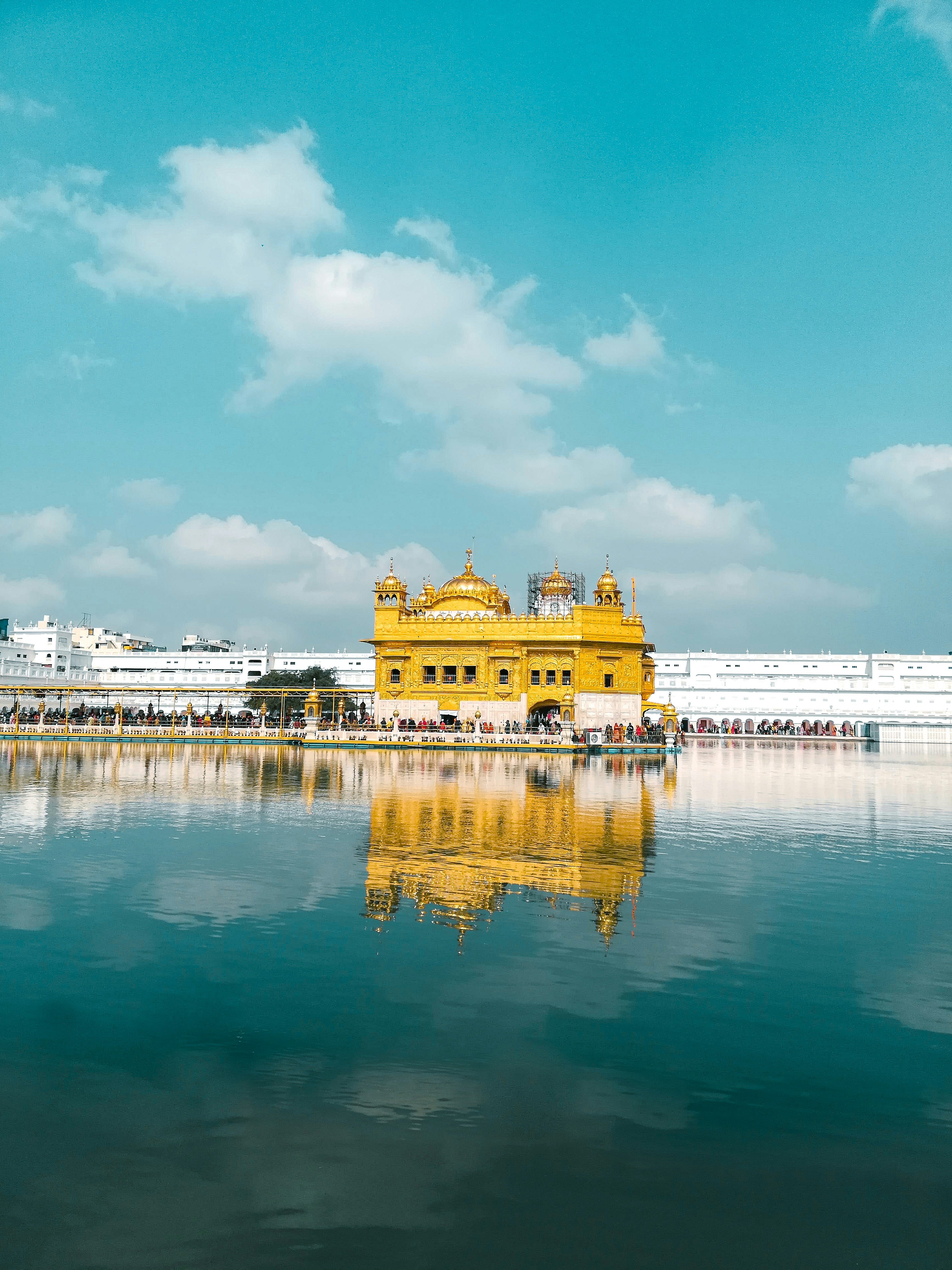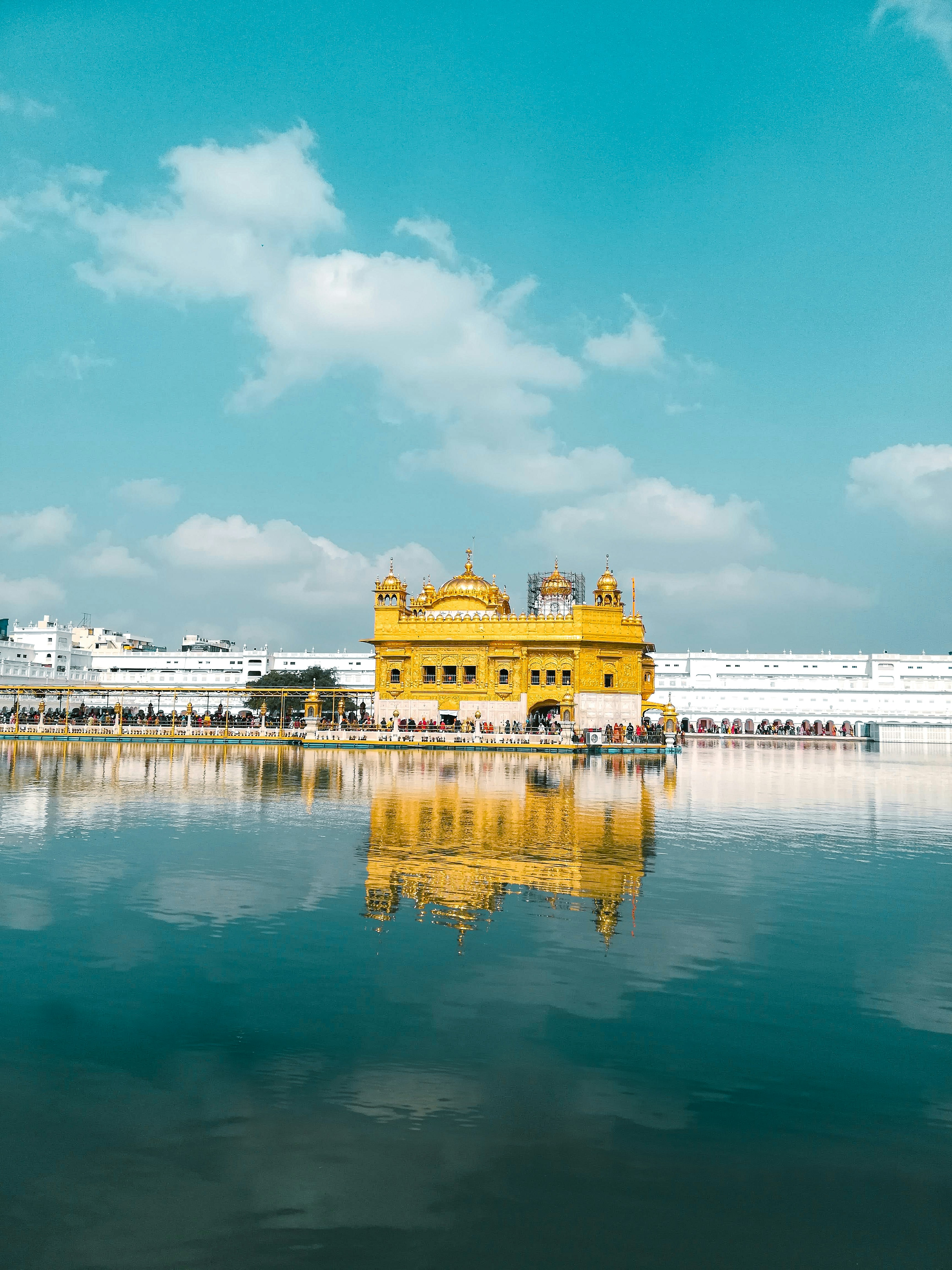The Golden Temple, also known as Sri Harmandir Sahib, stands as a gleaming symbol of Sikhism’s spiritual and architectural grandeur. Located in the heart of Amritsar, India, the Golden Temple attracts millions of pilgrims from all walks of life, seeking solace, spiritual connection, and the experience of the divine. The pilgrimage to the Golden Temple is a sacred journey that transcends religious boundaries and embodies the essence of Sikh philosophy.
A Sanctuary of Peace
As you approach the Golden Temple, you can feel a sense of tranquility enveloping the surroundings. The temple complex is situated in the middle of a serene lake, known as the Amrit Sarovar, which translates to the “Pool of Nectar.” The shimmering waters of the sarovar add to the ethereal beauty of the temple, creating a peaceful and meditative atmosphere.
Upon entering the temple complex, you are greeted by the mesmerizing sight of the Golden Temple itself. The temple’s golden exterior, adorned with intricate designs and patterns, glistens under the sunlight, captivating the eyes and inspiring awe. The architecture is a blend of Hindu and Islamic styles, symbolizing the harmonious coexistence of different faiths.
A Symbol of Equality and Inclusion
One of the most striking aspects of the Golden Temple is its open-door policy. Regardless of one’s religion, caste, or social status, everyone is welcome to visit and partake in the langar, a communal meal served in the temple’s dining hall. The langar is a testament to Sikhism’s core principles of equality, selfless service, and community. Sitting side by side with people from diverse backgrounds, sharing a meal prepared and served by volunteers, fosters a sense of unity and breaks down barriers.
As you join the langar, you experience firsthand the spirit of seva (selfless service) that permeates the Golden Temple. Volunteers tirelessly work together to prepare and serve food to the pilgrims, embodying the Sikh concept of sarbat da bhala, which means “blessings for all.” This act of service not only nourishes the body but also nourishes the soul, fostering a deep connection with humanity and a sense of oneness.
The Divine Experience
Inside the Golden Temple, the atmosphere is charged with devotion and reverence. The central shrine, known as the Harmandir Sahib, houses the Guru Granth Sahib, the holy scripture of Sikhism. As you enter the sanctum, you are engulfed in the melodious sounds of kirtan, devotional hymns sung by the temple musicians. The rhythmic chants and the soul-stirring music create an ambiance that transports you to a higher plane of consciousness.
Devotees sit in quiet contemplation, bowing their heads in prayer, and seeking solace in the presence of the divine. The Guru Granth Sahib is considered the living Guru, and its teachings provide guidance and inspiration to all who seek enlightenment. The Golden Temple is not just a physical structure; it is a spiritual sanctuary where the divine and the mortal meet.
Connecting with History
The Golden Temple holds immense historical significance for Sikhs. It was built in the 16th century by Guru Arjan Dev, the fifth Sikh Guru, as a place of worship and reflection. Over the centuries, the temple has witnessed numerous trials and tribulations, including attacks and desecration by foreign invaders. However, it has always risen from the ashes, a symbol of resilience and unwavering faith.
One of the most poignant chapters in the temple’s history is the Jallianwala Bagh massacre of 1919. Adjacent to the Golden Temple, Jallianwala Bagh is a public garden that witnessed a brutal massacre carried out by British troops. Today, it stands as a memorial to the martyrs who lost their lives in the struggle for independence. Visiting Jallianwala Bagh serves as a stark reminder of the sacrifices made and the resilience of the Sikh community.
A Journey of Self-Discovery
The pilgrimage to the Golden Temple is not just a physical journey; it is a profound inner journey of self-discovery and spiritual growth. As you immerse yourself in the sacred atmosphere of the temple, you are encouraged to reflect upon your own life, values, and beliefs. The teachings of Sikhism emphasize the importance of selfless service, compassion, and equality, providing a guiding light on the path to self-realization.
Many pilgrims choose to participate in the ritual of taking a dip in the Amrit Sarovar, believing that it purifies the soul and washes away sins. The act of submerging oneself in the holy waters is symbolic of leaving behind worldly attachments and embracing a new spiritual beginning.
A Global Spiritual Destination
The Golden Temple’s allure extends far beyond the borders of India. Sikhs and non-Sikhs from all corners of the globe embark on a pilgrimage to experience the divine tranquility that the temple offers. The Golden Temple serves as a beacon of hope, inspiring people to connect with their inner selves and embrace the principles of love, compassion, and service.
Visiting the Golden Temple is not just a religious obligation; it is an opportunity to witness the power of faith and the transformative impact it can have on individuals and communities. The pilgrimage leaves an indelible mark on the hearts and minds of those who embark on this spiritual journey, reminding them of the eternal quest for truth and inner peace.
A Journey to Remember
The Golden Temple pilgrimage is a transformative experience that transcends religious boundaries and touches the core of human existence. It is a journey that takes you from the chaos of the outside world to the serenity of the divine. The temple’s golden facade, the tranquil waters of the Amrit Sarovar, the soul-stirring kirtan, and the spirit of seva all come together to create an atmosphere of profound spirituality.
Whether you are a devout Sikh or someone seeking solace and spiritual connection, the Golden Temple pilgrimage offers a sanctuary where you can find peace, enlightenment, and a deeper understanding of the human experience. It is a journey that will stay with you long after you have left its hallowed grounds, reminding you of the power of faith, love, and unity.
Enter your email to get the Latest Updated Exploring News and Topics
Discover more from atozexplore.com
Subscribe to get the latest posts sent to your email.







